Gross anatomy is the study of the visible structures of the body, including their size, shape, composition, and coloration. It provides a foundation for understanding the organization and function of the human body. By examining the gross anatomy of organs, tissues, and body systems, medical students can gain a comprehensive understanding of how the body is structured and how it functions as a whole. This knowledge is essential for diagnosing and treating diseases and disorders.
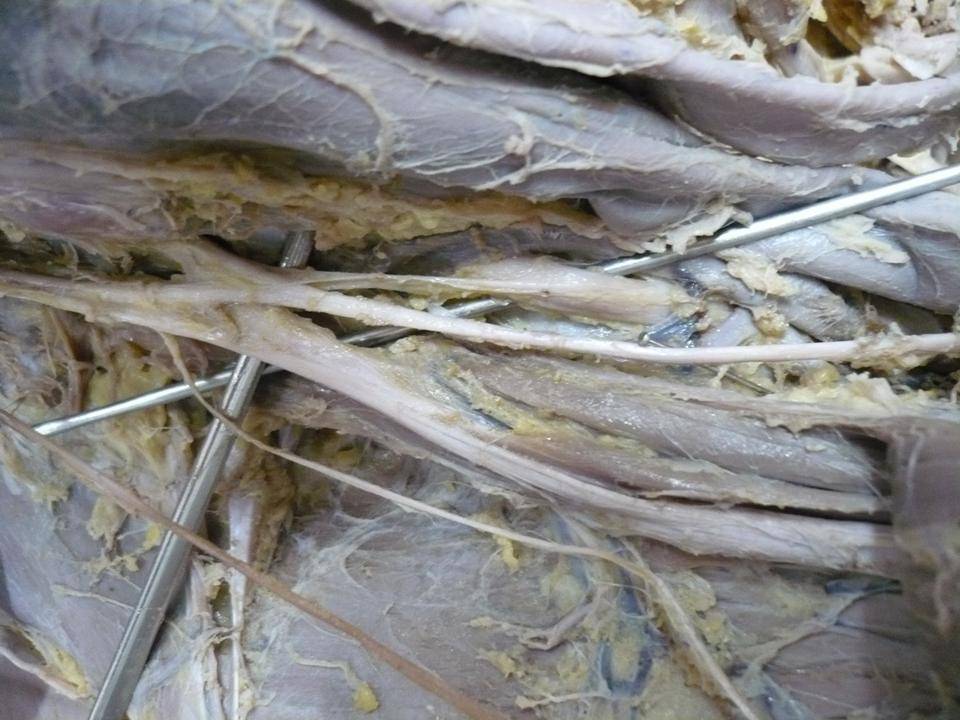
In gross anatomy, students learn about the different organ systems of the body, such as the cardiovascular system, respiratory system, digestive system, and musculoskeletal system. They study the structure and function of organs within these systems, including the heart, lungs, stomach, and bones. By dissecting cadavers and examining anatomical models, students gain a hands-on understanding of the intricate details of the human body.
Embryology is the study of the development of an organism from the fertilization of an egg to the formation of a fully developed fetus. It explores the complex processes of cell division, differentiation, and organ formation that occur during embryonic development. By understanding embryology, medical students can gain insights into the origins of various congenital abnormalities and developmental disorders.
During embryology lessons, students learn about the different stages of embryonic development, including fertilization, implantation, gastrulation, and organogenesis. They study the formation of major organ systems, such as the nervous system, cardiovascular system, and respiratory system. By examining embryonic structures and studying developmental abnormalities, students develop a deep understanding of the intricate processes that shape human life.
Microscopic anatomy, also known as histology, focuses on the study of tissues and cells at a microscopic level. It involves the use of microscopes to observe and analyze the structure and function of cells and tissues. By studying microscopic anatomy, medical students can gain a detailed understanding of the cellular basis of organ function and pathology.
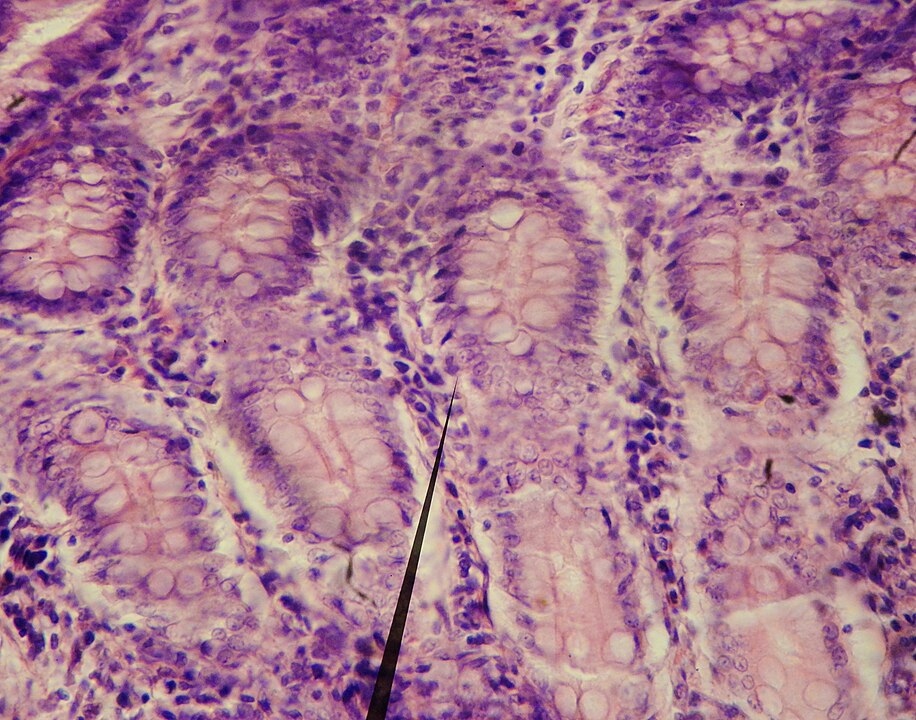
In microscopic anatomy lessons, students examine different types of tissues, including epithelial, connective, muscle, and nerve tissues. They learn about the unique characteristics and functions of each tissue type. Students also explore the cellular components of tissues, such as cells, extracellular matrix, and cellular organelles. By studying histological slides and conducting laboratory experiments, students develop the skills to identify and analyze microscopic structures.
To effectively study anatomy and embryology, it is important for medical students to understand and use the appropriate terminology. This section provides an overview of key terms and concepts that are essential for communicating and describing anatomical structures and processes.
The human body is organized into various levels of structural and functional complexity, including chemicals, cells, tissues, organs, and organ systems. Chemicals in the body can be categorized as inorganic or organic, with inorganic chemicals typically being simple molecules and organic chemicals containing carbon and hydrogen. Cells are the smallest living units of structure and function, and tissues are groups of cells with similar structure and function. Organs are composed of different tissues arranged to perform specific functions, while organ systems consist of multiple organs working together to achieve a common goal.
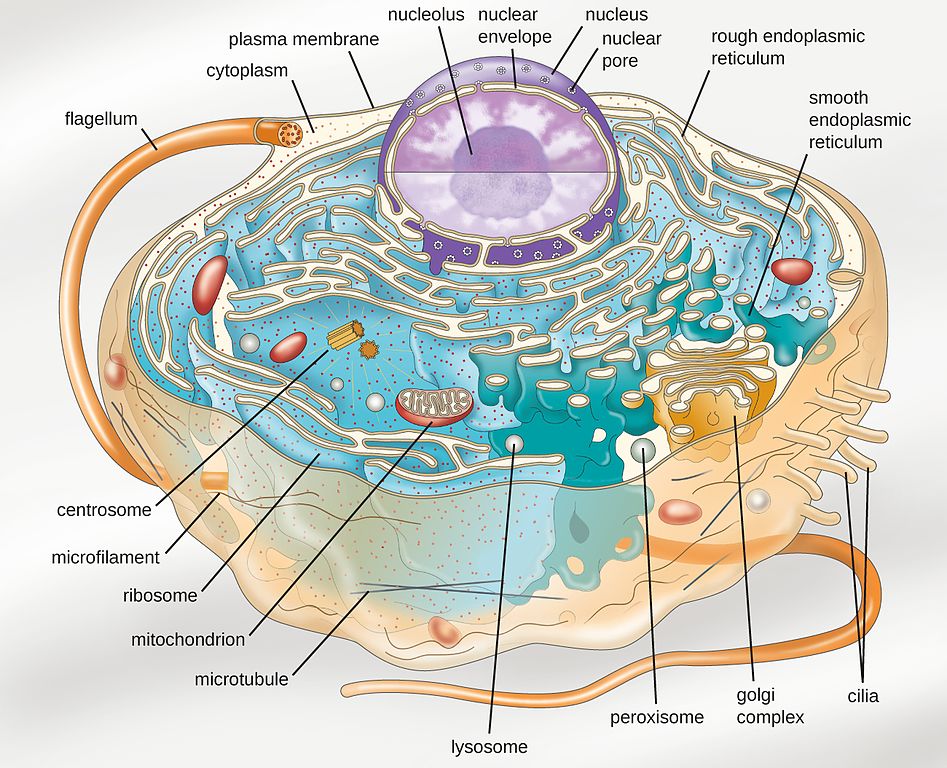
Understanding the terminology and general plan of the body is essential for effective communication and identification of body parts and areas. Medical students learn terms related to location and position, such as superior, inferior, anterior, posterior, medial, lateral, proximal, and distal. They also learn about body cavities and their membranes, including the dorsal cavity (cranial and spinal cavities) and ventral cavity (thoracic and abdominal cavities). Terms related to planes and sections, such as frontal, sagittal, transverse, cross-section, and longitudinal section, are also important for describing anatomical structures.
In the study of anatomy, there are several useful terms that are commonly used to describe the relative position and location of body parts. One such term is "superior," which refers to a position above or higher than another structure. For example, the heart is considered superior to the liver in the human body. On the other hand, "inferior" is the opposite of superior and refers to a position below or lower than another structure. In the example mentioned earlier, the liver is considered inferior to the heart.
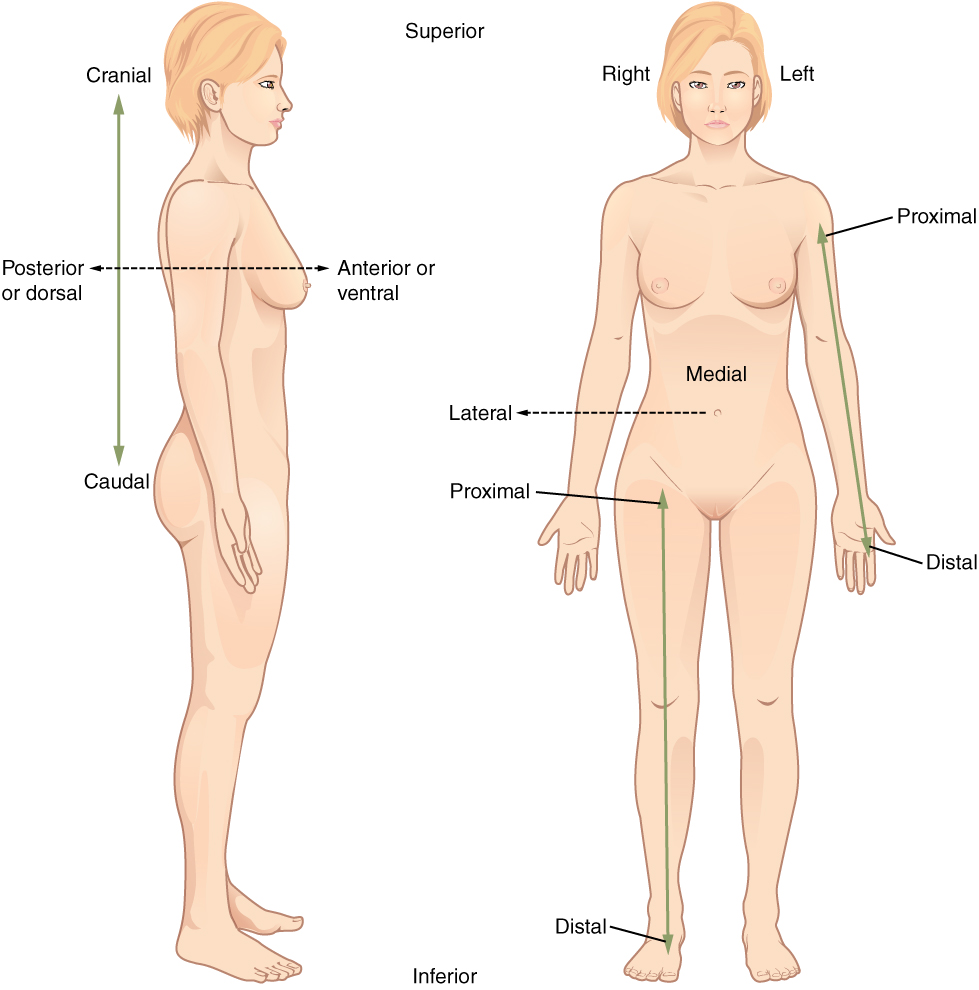
Another important term is "anterior," which describes a position towards the front of the body. For instance, the chest is located on the anterior side of the body. Conversely, "posterior" refers to a position towards the back of the body. An example of this would be the lumbar area, which is posterior to the umbilical area.
"Ventral" and "dorsal" are two terms that describe positions on the front and back sides of the body, respectively. The ventral side is also known as the anterior side, while the dorsal side is synonymous with the posterior side. An example of these terms in action is the mammary area, located on the ventral side of the body, while the buttocks are on the dorsal side. Despite humans being bipedal, this analogy provides a useful understanding. Still, these two terms were originally used for the descriptions of features in animals, so it's worth noting that when applied to body parts, the ventral side can be synonymous with the inferior side, while the dorsal side corresponds to the superior side.
Additionally, the terms "medial" and "lateral" are used to describe positions relative to the midline of the body. "Medial" refers to a position closer to the midline, while "lateral" refers to a position further away from the midline. For instance, the trachea is considered to be located medially to the lungs, while the shoulders are located more laterally when compared to the neck. There terms always refer to the center of the entire body, even when they are used to describe different features in a body part.
Other important terms include "internal" and "external," which describe positions within or outside of a structure, respectively. "Superficial" and "deep" are terms used to describe positions closer to or further away from the surface of the body. "Central" and "peripheral" refer to positions towards or away from the center of an organ or structure. If "medial" and "lateral" always have the entire body as a point of reference, these other terms may be used to describe individual features in relation to the body part that is discussed.
We alse have terms like "Proximal" and "distal" which are used to describe positions closer to or further away from the point of attachment or origin. "Parietal" and "visceral" describe the position of membranes in relation to the walls of body cavities and organs, respectively.
When studying anatomy, the study of movement and an undertsnding of the major movement terms is crucial for comprehending the intricacies of the human body. Let's delve into some key terms regarding the main movements of the limbs:
Abduction and Adduction: Abduction involves moving a limb away from the body's midline, while adduction brings it back towards the midline. Picture spreading your arms wide (abduction) and then bringing them back together (adduction).
Anteversion and Retroversion: Anteversion is the forward movement of a body part, often referring to the hip joint's forward tilt. Retroversion, on the other hand, is the backward movement or tilt. These terms are particularly relevant in understanding pelvic anatomy and posture.
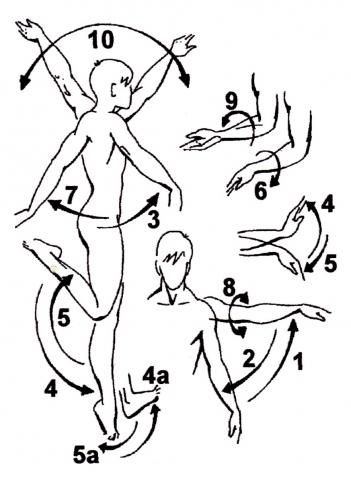
Extension and Flexion: Extension straightens a joint, increasing the angle between body parts, like when you straighten your arm. Flexion, conversely, decreases this angle, typically bending a joint. Think of curling your arm towards your shoulder.
Pronation and Supination: These terms are often associated with the forearm. Pronation involves the rotation of the forearm and hand to face downward, while supination turns them upward. It's like turning a doorknob with your palm facing down (pronation) or up (supination).
Rotation: This movement involves turning a body part around its axis. For instance, the rotation of the head from side to side or the rotation of the hip joint during walking.
Circumduction: A more complex movement involving a circular motion of a limb at a joint. An example is the circular motion when you swing your arm, creating a cone-like space.
Mastering these movement terms is fundamental for any medical professional, providing a nuanced understanding of how the human body functions in motion.
Volar Flexion/Palmar Flexion – Dorsiflexion: Flexion/extension of the hand towards the palm/back of the hand.
Inversion – Eversion: Raising the inside/outside of the foot (in the lower ankle joint).
Protraction – Retraction: Forward/backward guidance of the scapula ventrally/dorsally.
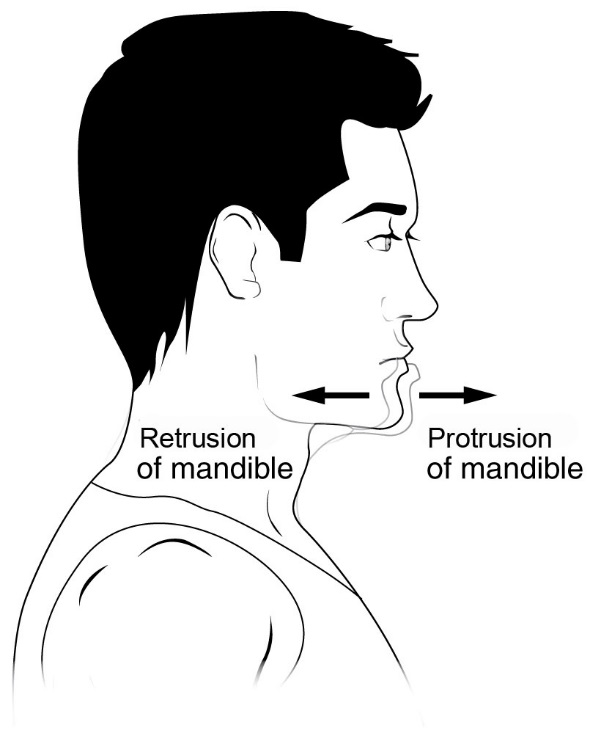
Protrusion – Retraction: Lower jaw forward from resting position/back from protrusion position.
Retrusion – Protraction: Lower jaw backward from resting position/forward from retrusive position.
Occlusion: Term for the interlocking of teeth.
Mediotrusion – Laterotrusion: Lower jaw forwards-inwards on one side and backward-outward on the other side.
Laterotraction - Mediotraction: Lower jaw backward-outward on one side and forward-inward on the other side.
Mastering these specific movement terms enhances the comprehension of the intricate dynamics within joints and musculoskeletal regions.
Planes and sections are essential tools used to describe the human body and its various parts. These imaginary flat surfaces help in visualizing and understanding the internal anatomy. The frontal (coronal) section is a plane that divides the body into front and back portions. It is useful in studying structures such as the brain or the chest, as it allows for a clear view of the anterior and posterior aspects. On the other hand, the sagittal section is a plane that runs from front to back, separating the body into right and left portions. A midsagittal section creates equal halves, providing a detailed view of structures like the heart or the spinal cord.

Another important plane is the transverse section, which is a horizontal plane that divides the body into upper and lower portions. This plane is particularly useful in studying structures located at different levels, such as the organs of the abdomen or the muscles of the legs. A cross-section, perpendicular to the long axis of an organ, allows for a comprehensive view of its internal structure. For instance, a cross-section of the small intestine would appear as a circular shape with the intestinal cavity in the center. Lastly, a longitudinal section is a plane along the long axis of an organ, providing a detailed view of its length. This type of section is commonly used to study structures like blood vessels or bones, such as a longitudinal section of the femur (thigh bone).
By utilizing these planes and sections, anatomists and healthcare professionals can accurately describe and analyze the intricate details of the human body. These tools enable a comprehensive understanding of the body's structures and their relationships, aiding in the diagnosis and treatment of various medical conditions.
In conclusion, the study of anatomy and embryology is essential for medical students to develop a comprehensive understanding of the human body. By exploring gross anatomy, embryology, microscopic anatomy, and understanding key terms and concepts, students can lay a strong foundation for their future careers in the health professions.
In the exploration of the intricate tapestry that is the human body, our journey begins with an understanding of anatomy. Anatomy, derived from the Greek words 'tome' (meaning 'cut') and 'ana' (meaning 'up'), so literally to cut up! Anatomy is the science that unravels the structural framework of living organisms. It is not merely a study of bones and muscles but a profound exploration into the symphony of life that orchestrates our existence. Anatomy is not only a way of studying a living organism, but also a language that allows us to better describe the complexities of the human form and pass the information on between generations.
In our introductory lesson, we will be acquainting ourselves with some directional terms that act as navigational guides of the human body. Terms like cranial and caudal delineate the orientation of structures, while external and internal speak to the relative positioning within the body's confines. All these terms will act as anchors when describing each intricate structure in the human body and will help us better locate and delineate each one from the other structures.
Delving deeper into the study of anatomy, we encounter the language of medicine, where every aspect has its own unique identifier in the form of Latin names. This linguistic precision is not a mere formality; as English is now a universal language, and most of the publications and studies are written in this language, Latin was originally the key to a universal understanding that transcends geographical boundaries and unites medical professionals in a shared lexicon.
As we embark on this odyssey into the realm of anatomy, remember that every term, every structure, is a thread in the narrative of our life as human beings, and the study of anatomy will be a ground pillar into better understanding not only the functioning of the human body but will guide us through studying the physiological and pathological principles as well. In the chapters to come, we will unravel the intricacies of organs, systems, and the breathtaking harmony that sustains the miracle of the human body.
Anatomy, Medical Students, Study Techniques, Principles of Anatomy, Basic Anatomy Concepts, Anatomy Terminology, Body Systems, Cadaver Dissection, Histology, Imaging Techniques, Anatomical Regions, Medical EducationIntroduction into the study of Human AnatomyStudying anatomy - Basics & Principles0000